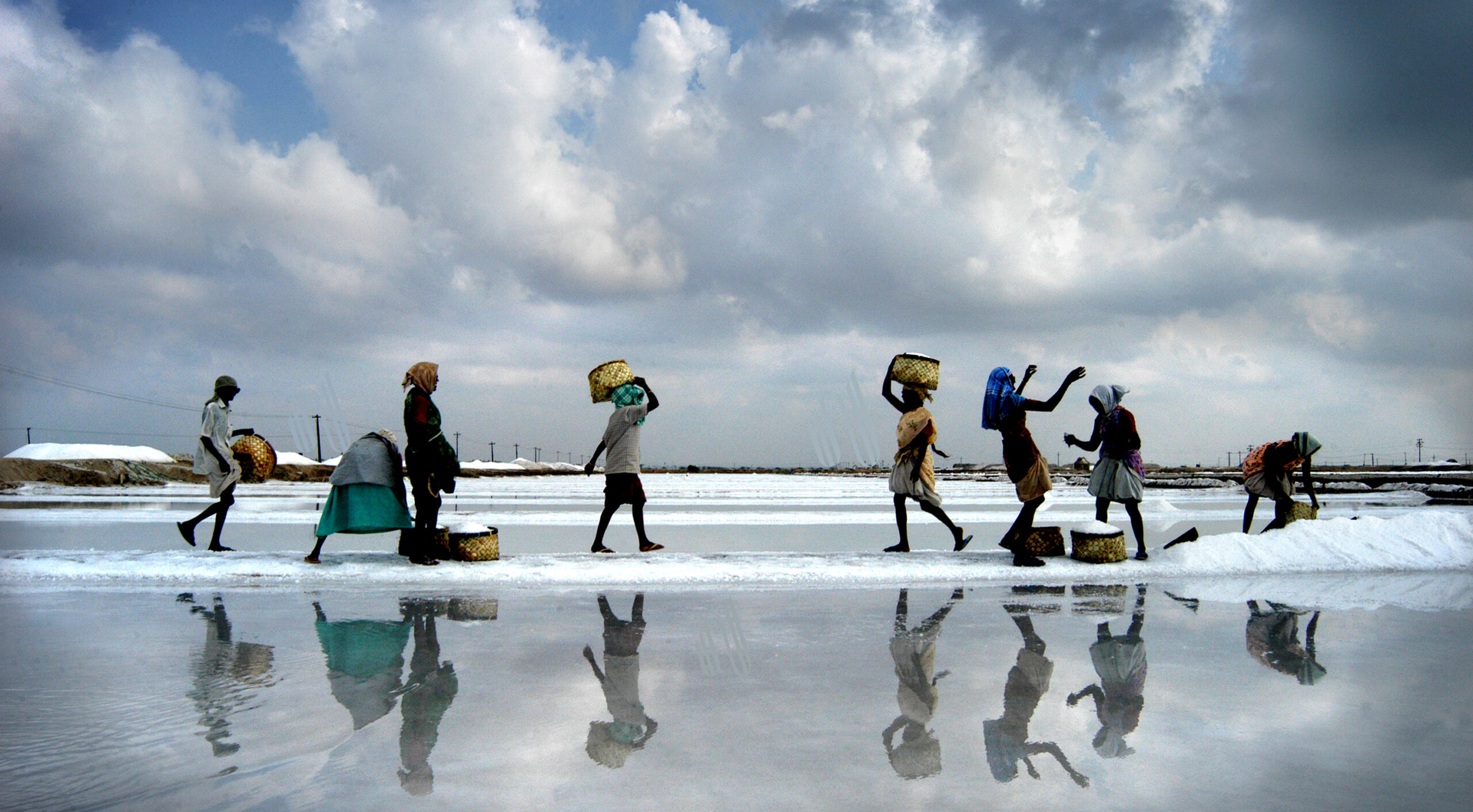
GREY AREAS AMID A STARK MONOCHROME LIFE
In focus, the lives and hardships of salt harvesters who toil
in this small industry across coastal Tamil Nadu
In these images of workers harvesting salt near Thoothukudi (Tuticorin), Shaju captures the striking beauty of monochromatic shapes and forms, dotted with bursts of colour, against what appears to be a vast, white frozen field. But the visuals hide the stark reality of the nature of this work. It may seem arresting in its beauty but, make no mistake, this is no Salar de Uyuni. Not for these everyday workspaces the magic of those Bolivian salt flats, as clear as reflective glass, in which people encounter surreal mirror images of themselves and the stunning landscape around them.
For the workers at these salt units on the Tamil Nadu coast, this is a tough life, with little relief by way of even the most basic personal protection against the corrosive effects of salt on their legs and arms, and on their health as a whole. Many workers suffer from skin conditions and dental problems, aside from anaemia and weakness of the muscular system. The workers get by with the most primitive of safety gear, usually some thick socks, but often just pieces of gunny sacking fastened with rope to their legs, as they run back and forth along the bunds of the salterns, the shallow areas where saline water from borewells is filled and dries out, forming the crystals.
India is the world’s third largest producer of salt, and the salt pans in the Thoothukudi region produce about a third of the country’s own salt requirements, with Gujarat accounting for the highest output, followed by Rajasthan, Maharashtra, Andhra Pradesh and Odisha. About 80 per cent of salt producing units operate in the unorganised sector, employing labour in an activity that is seasonal, and is spread over six to eight months, usually between the monsoons. Sometimes, these workers get jobs as farm labour for the remaining months, though this is not guaranteed.
Studies by medical researchers show that many salt pan workers are affected by more serious health conditions. There is evidence of an increasing incidence of renal problems, brought on by severe dehydration over the long, 8-9 hour work-days, during which workers get just two brief comfort and food breaks. Carrying heavy loads of harvested crystals from saltern to storage point through the day, the workers are exposed to both blistering heat and the blinding whiteness of the salt crystal mounds. Over time, this and exposure to UV radiation affects their eye health. Protective spectacles are a must to save their vision, but only a few wear dark glasses.
A few owners of salt producing units care enough about the workers to provide them clean drinking water, personal protective clothing and rest-room facilities, but they are a small minority. Hit by the double whammy of climate impact and then the pandemic, most of them are preoccupied with their own concerns of diminishing profits in this century-old small industry – yet another activity of the unorganised sector that is struggling to stay afloat in difficult times.
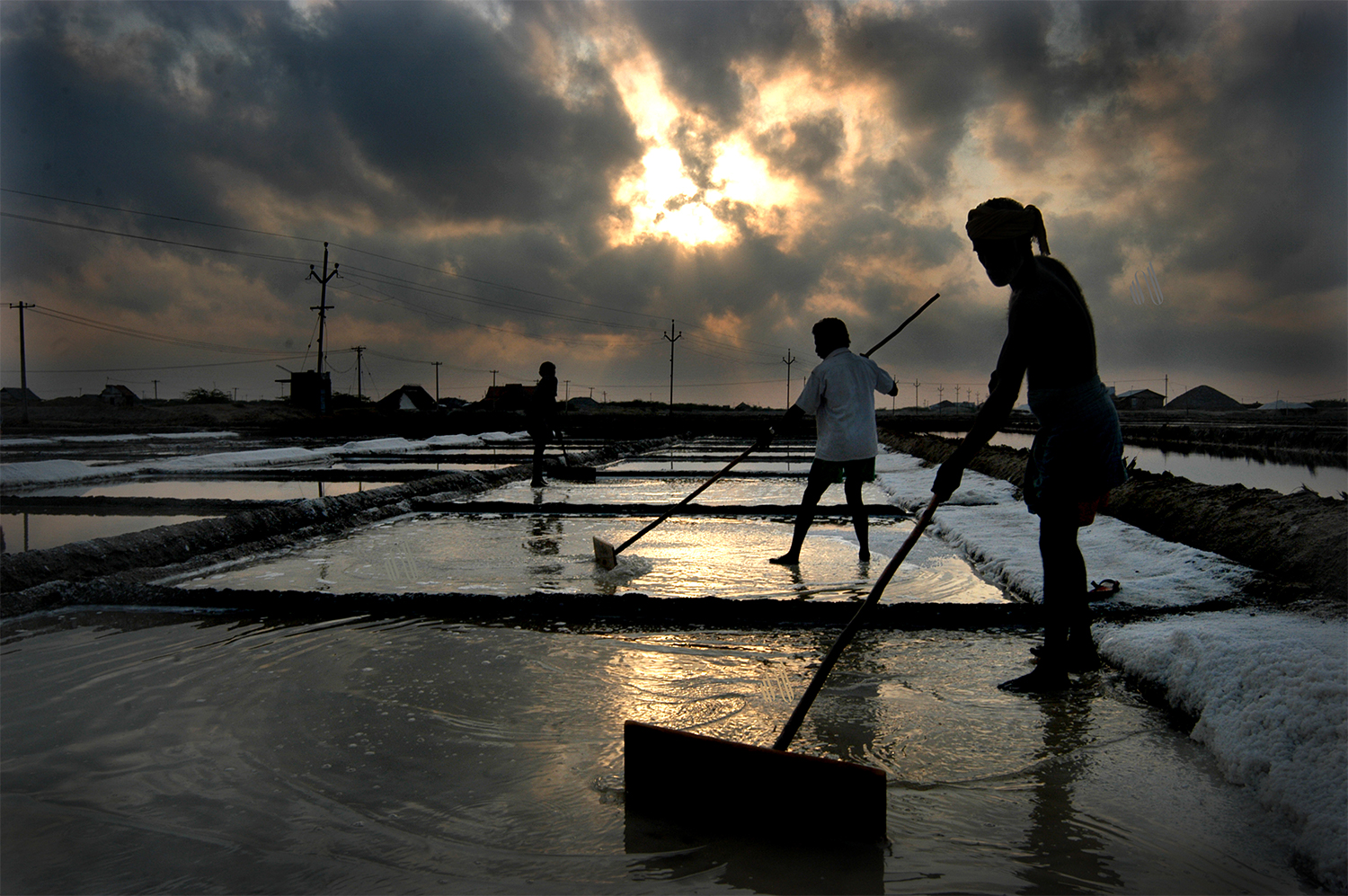
Barefoot workers work the salterns, exposing
themselves to the corrosive effects of salt
Clouds above and below: Mounds of freshly
farmed salt rise up to the sky
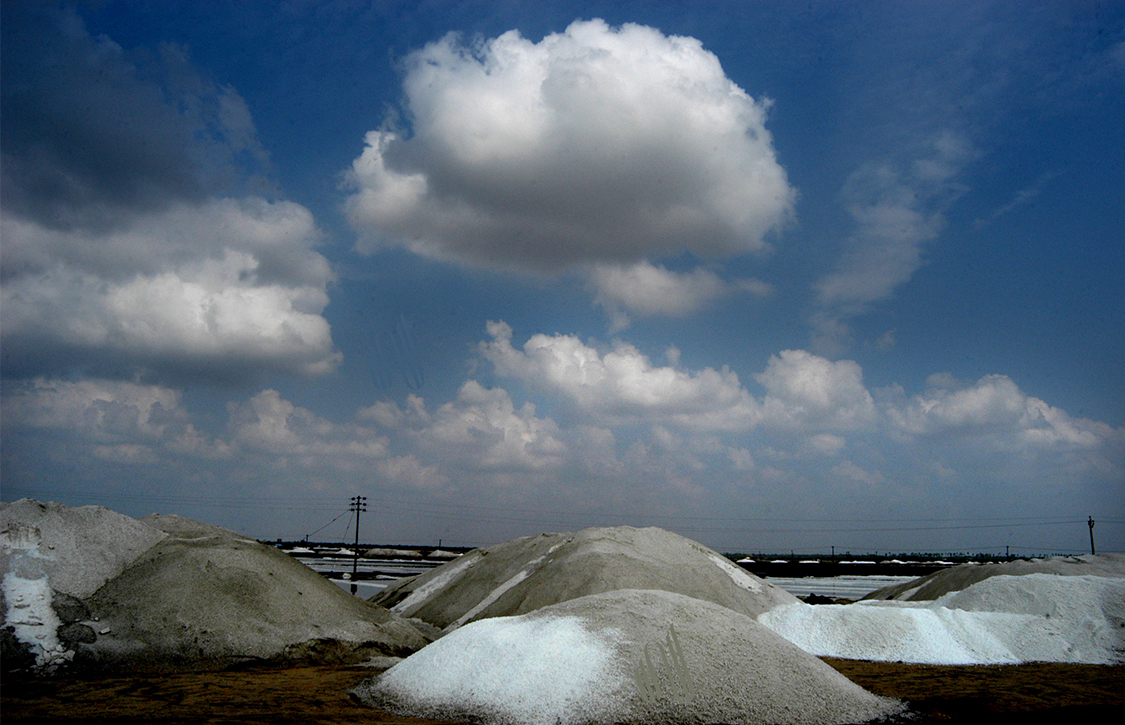

SALT OF THE EARTH
Clouds above and below: Mounds of freshly farmed salt rise up to the sky
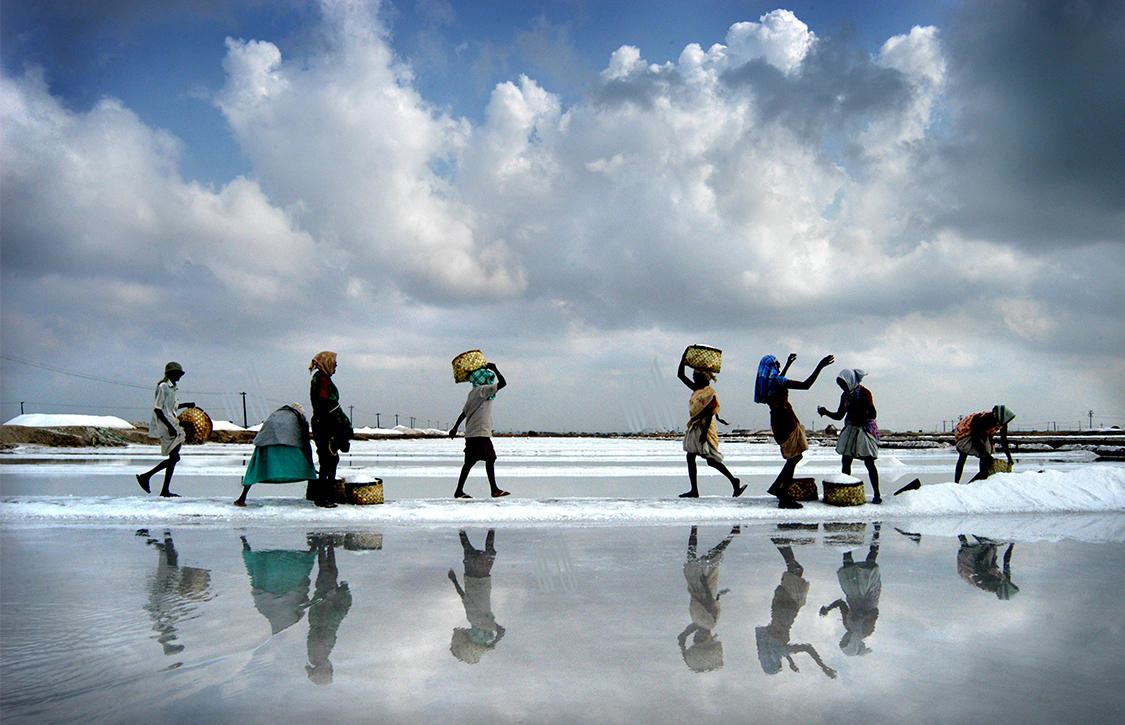
Dark silhouettes of workers against the
frosty reflection of the sky
A splash of color on the run: Workers in bright
attire scamper over the salt bunds
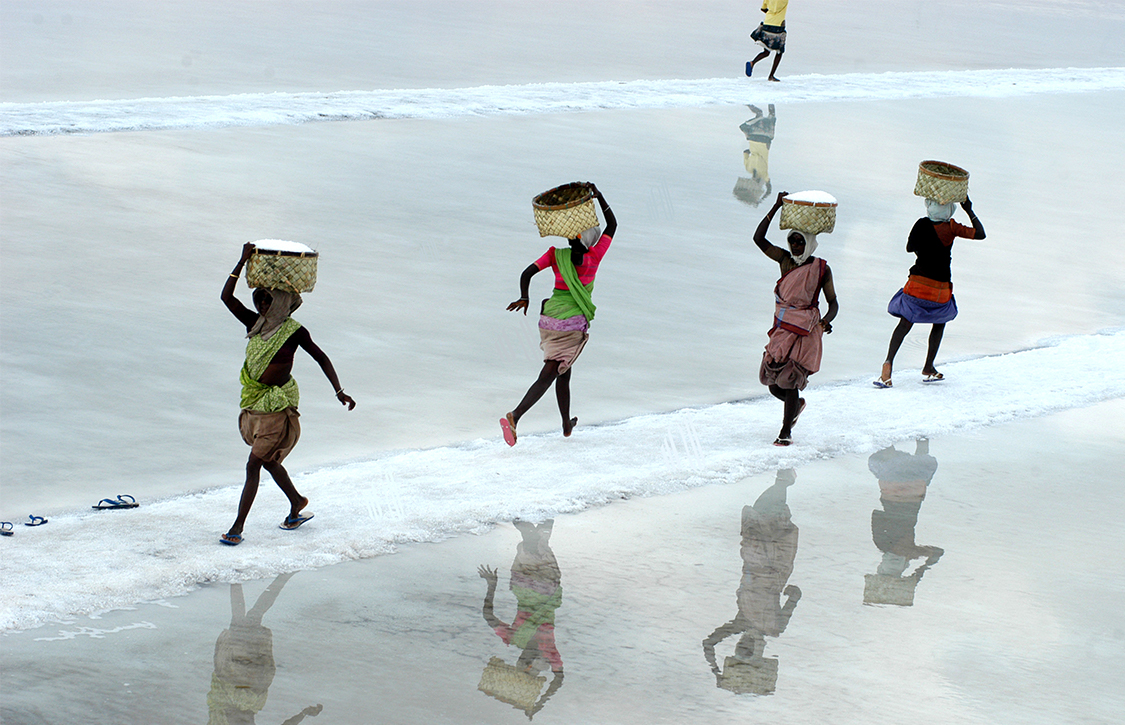

A splash of color on the run: Workers in bright
attire scamper over the salt bunds
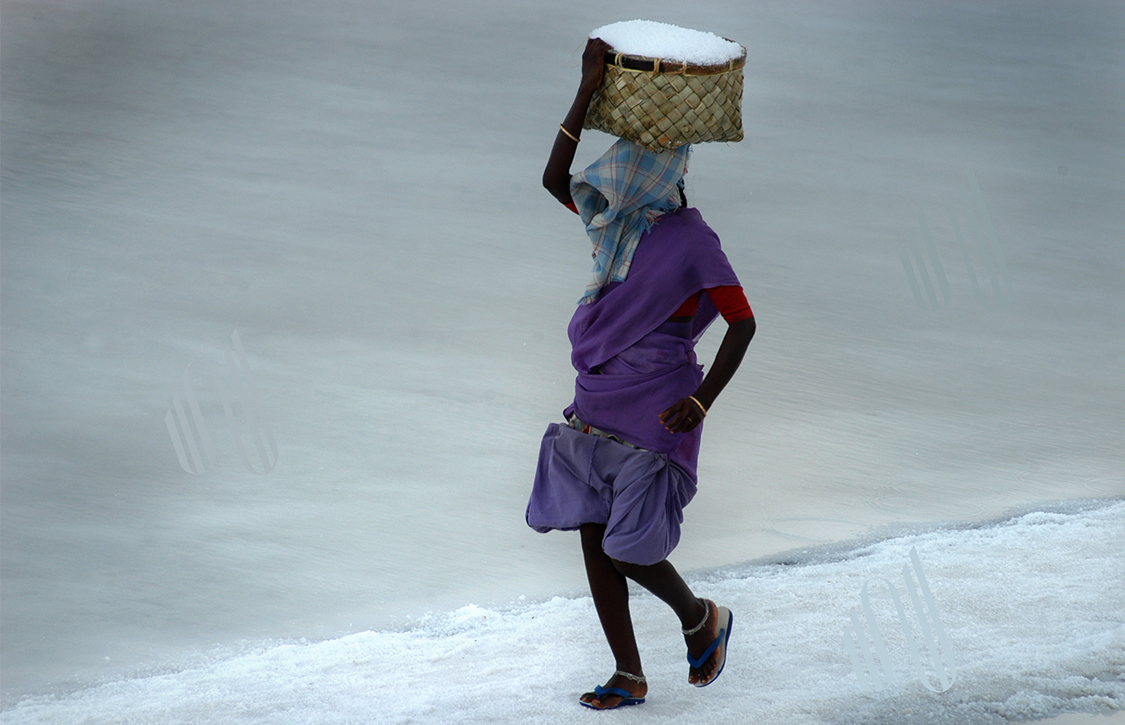
A headload of salt: A spectre in purple
carrying her day’s work
Unseen under the open skies: Their heads covered,
workers carry baskets full of freshly farmed salt
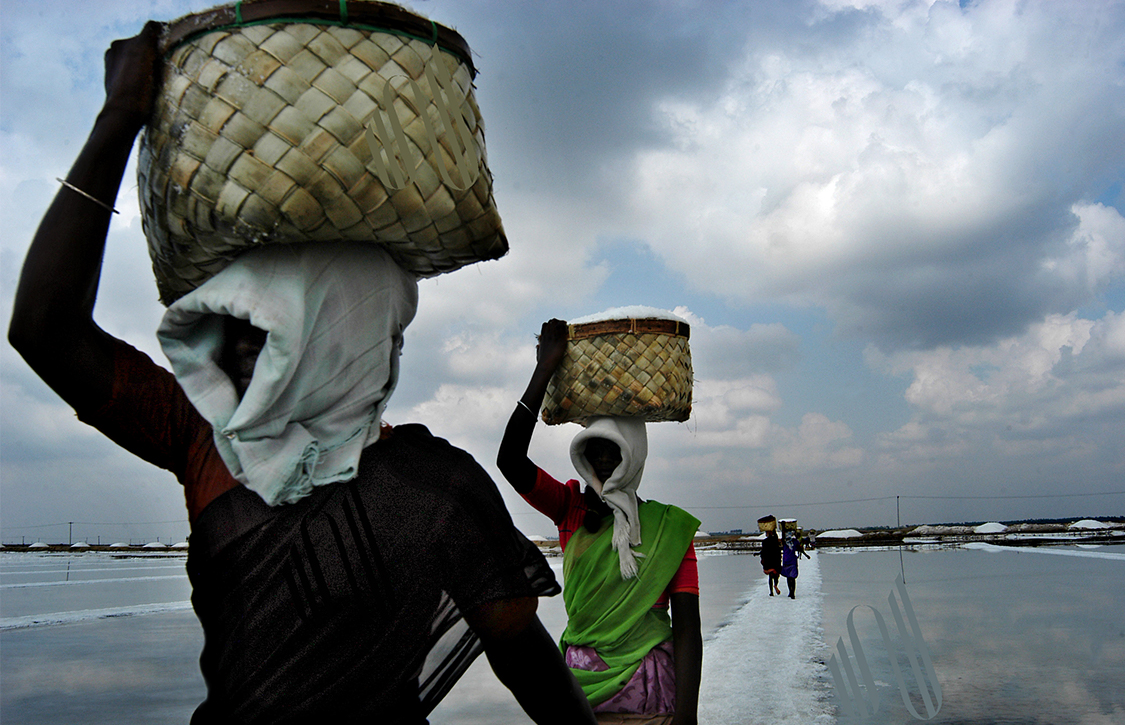

SALT OF THE EARTH
Unseen under the open skies: Their heads covered,
workers carry baskets full of freshly farmed salt
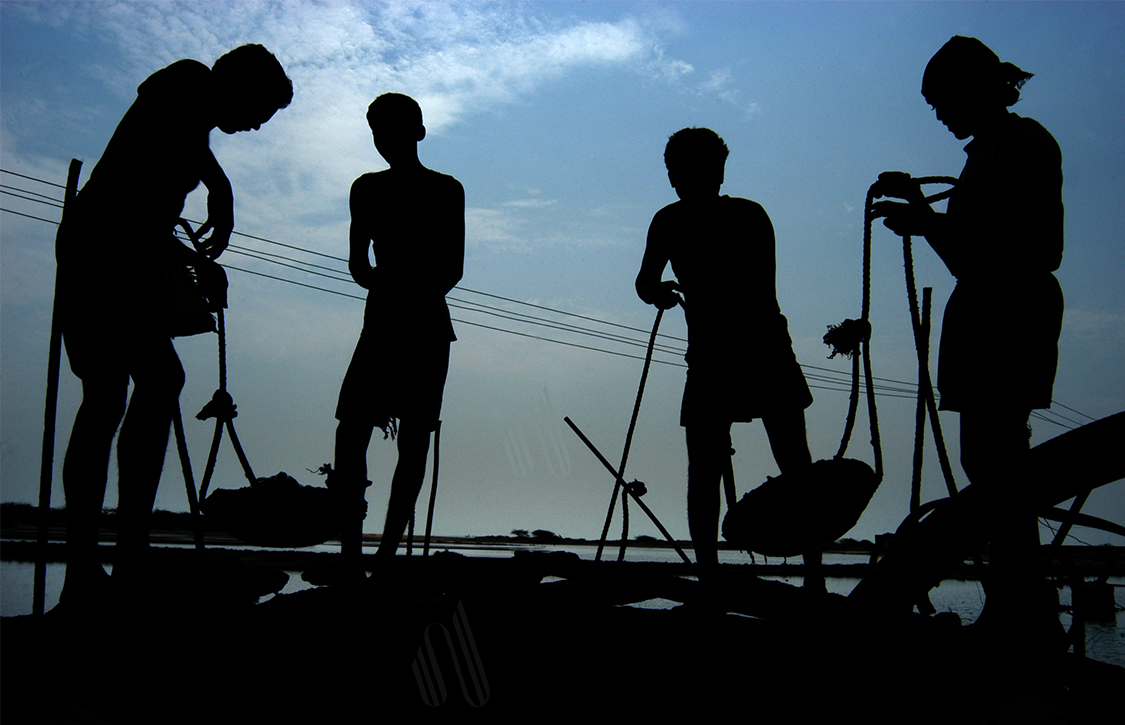
Workers readying themselves to toil
Salt like fresh snow spread across an ivory field,
being shovelled into a basket. A rare instance
of a worker wearing dark glasses to protect from
the blinding whiteness of the salt mounds and UV radiation
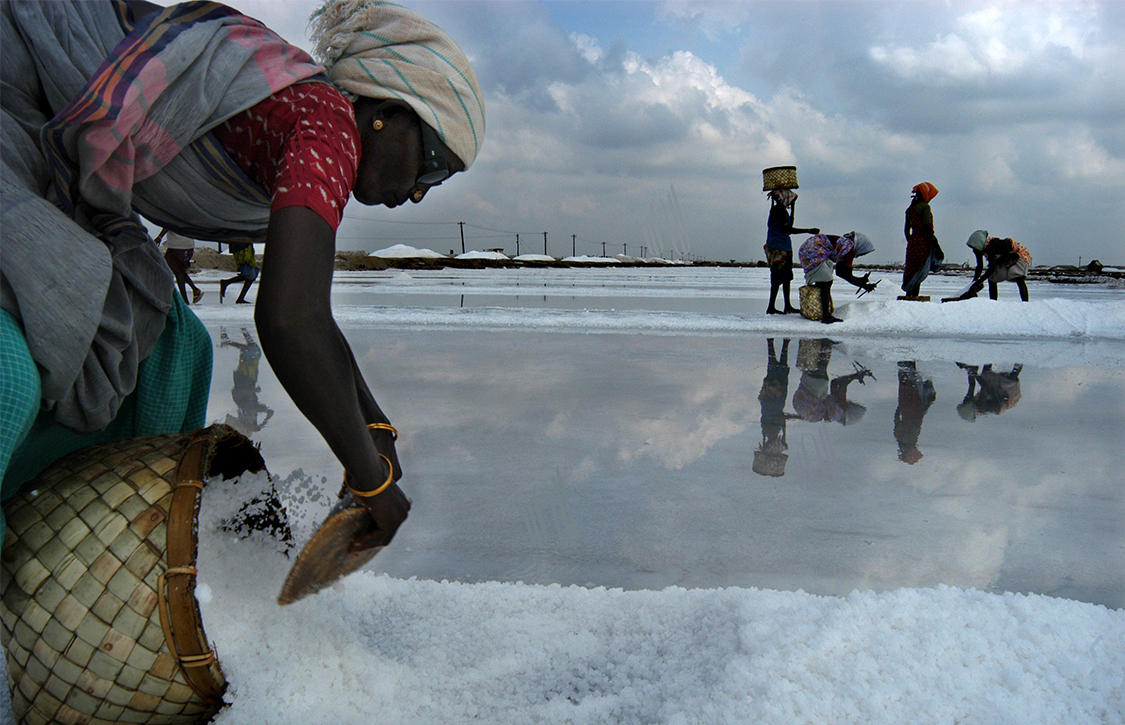

Salt like fresh snow spread across an ivory field, being shovelled into a basket.
A rare instance of a worker wearing dark glasses to protect from
the blinding whiteness of the salt mounds and UV radiation
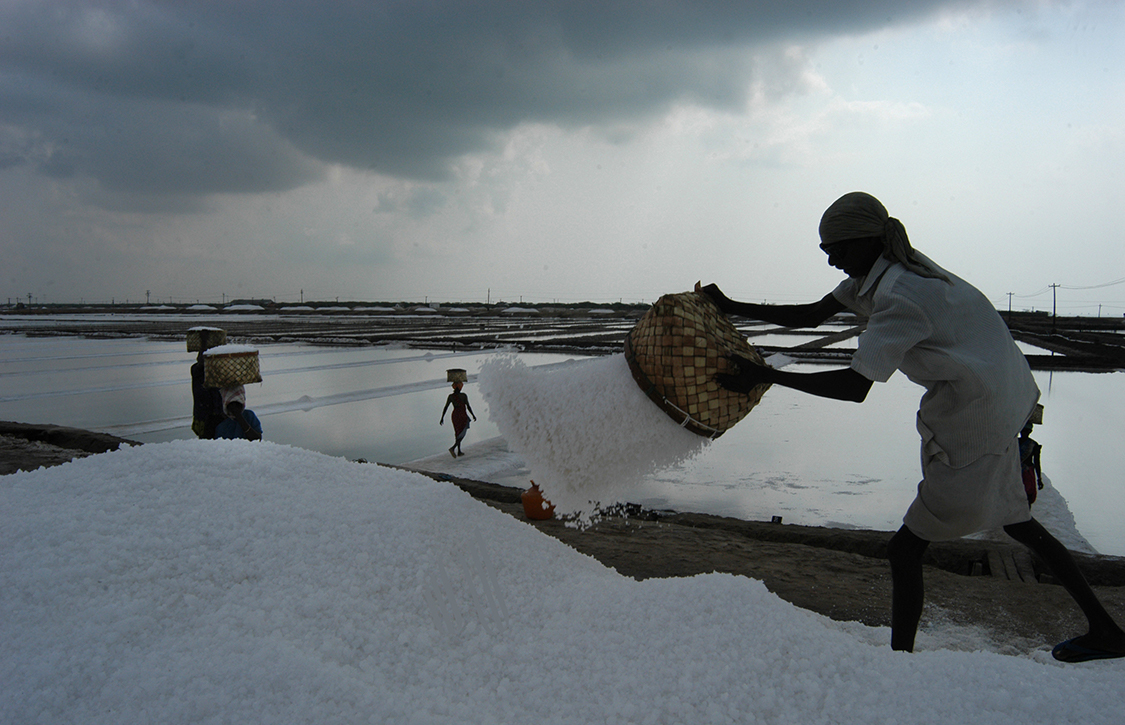
Salt crystals being heaped, one basket at a time
A dash of cobalt blue against porcelain white:
Workers with brightly coloured containers scurry
back and forth collecting and depositing salt
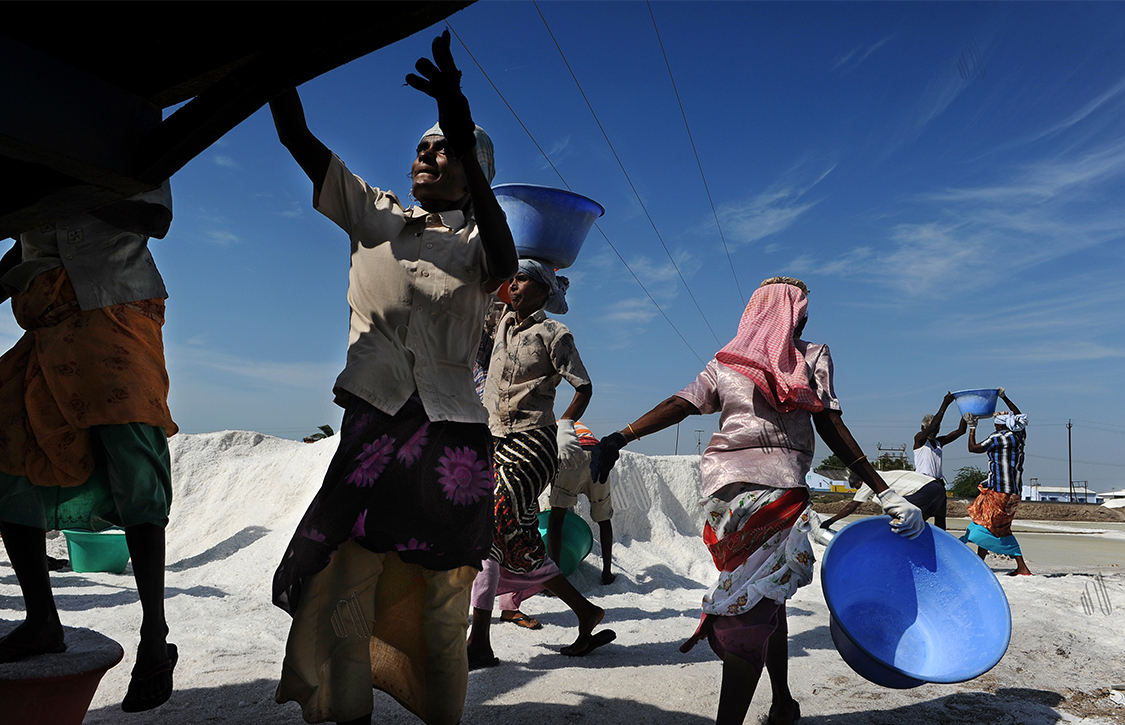

A dash of cobalt blue against porcelain white:
Workers with brightly coloured containers scurry
back and forth collecting and depositing salt

A lone worker rakes the saltern, wading
through near acidic brine
Sweaty brow and arm clasped:
No respite while working the salt fields
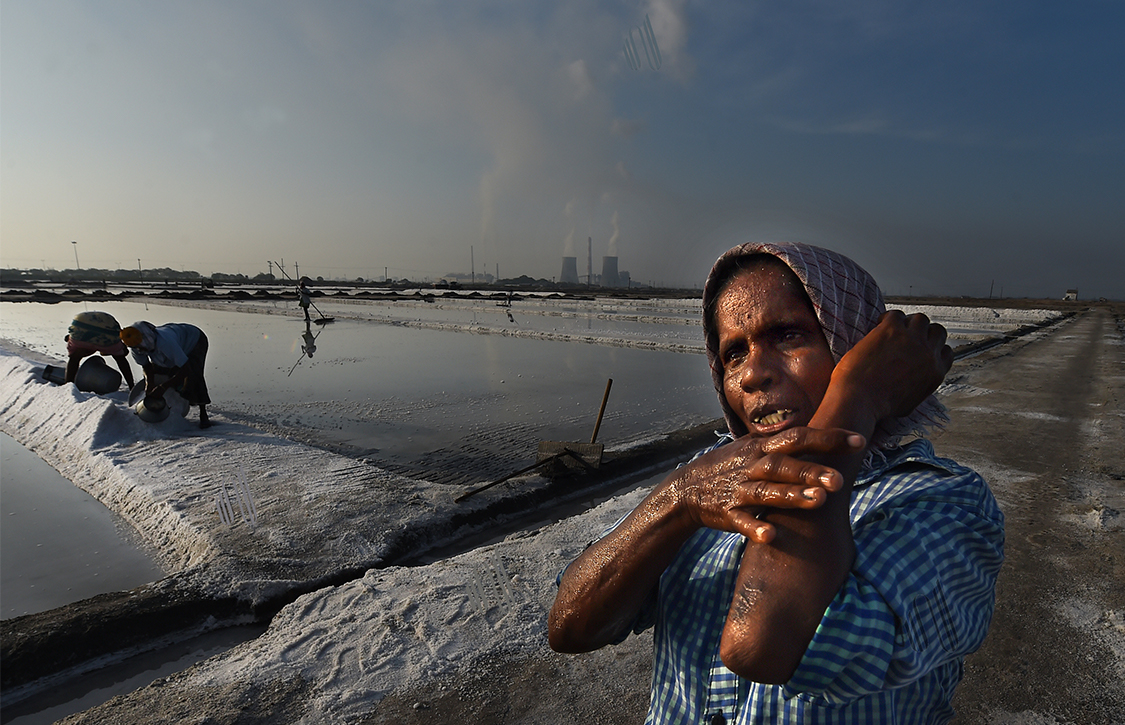

Sweaty brow and arm clasped:
No respite while working the salt fields
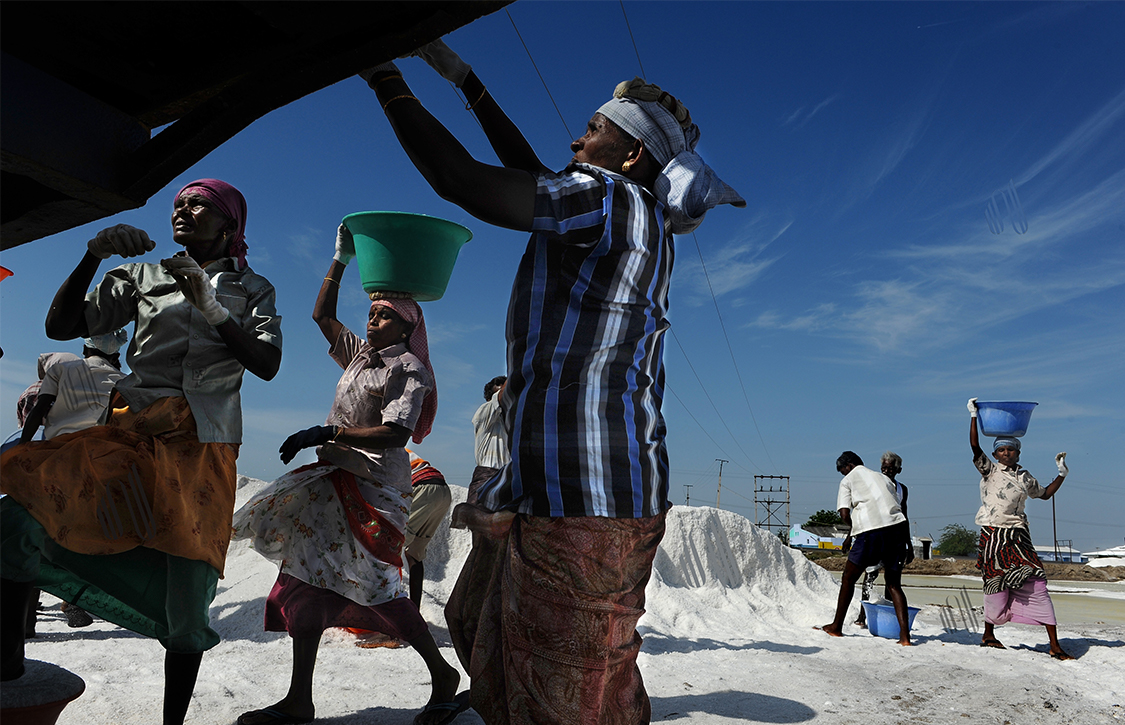
A human conveyor belt
Carefully levelling out the day’s produce
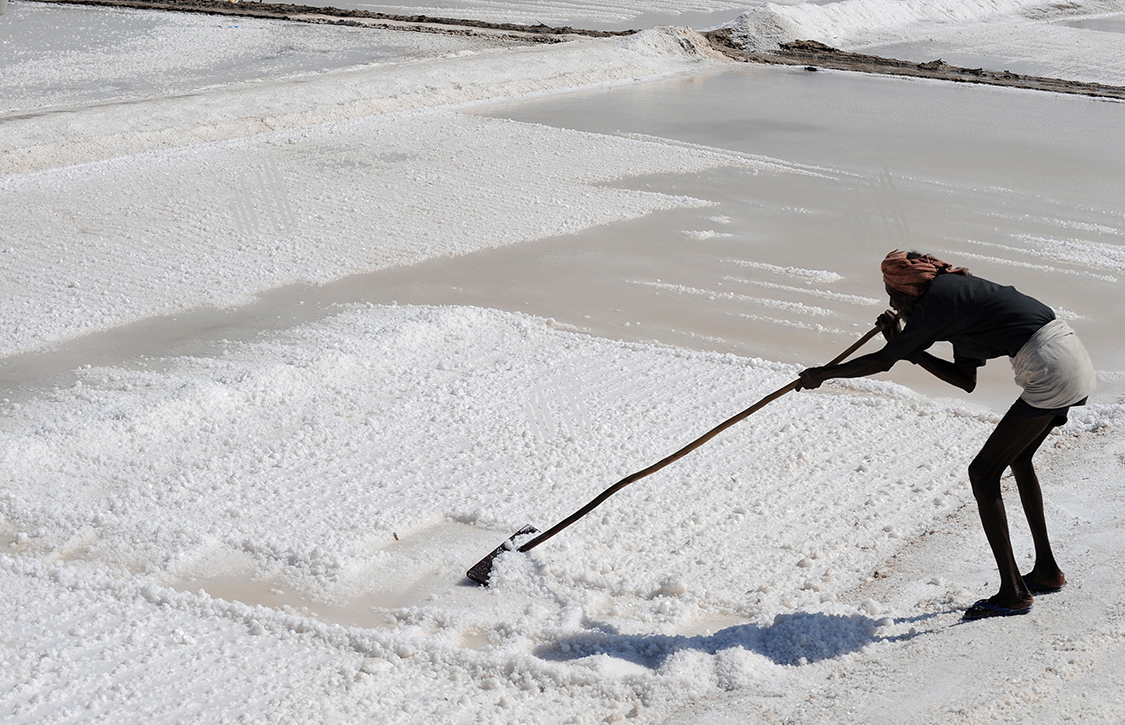

Carefully levelling out the day’s produce
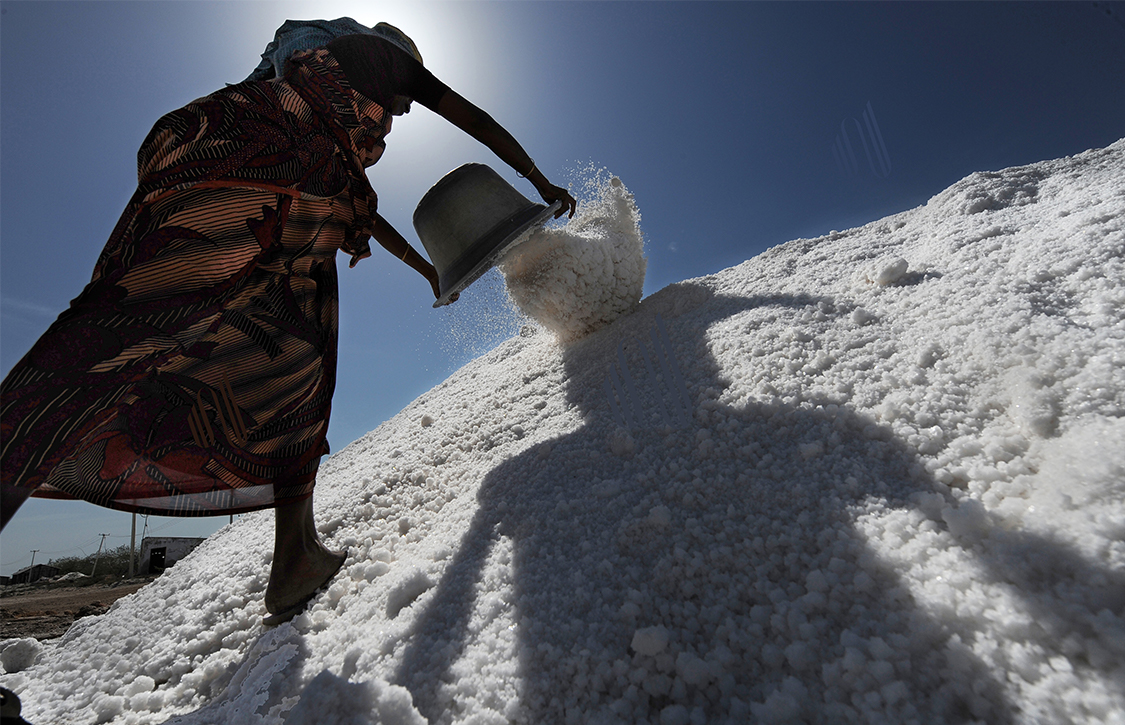
A basket to empty, and another to fill
At day’s end
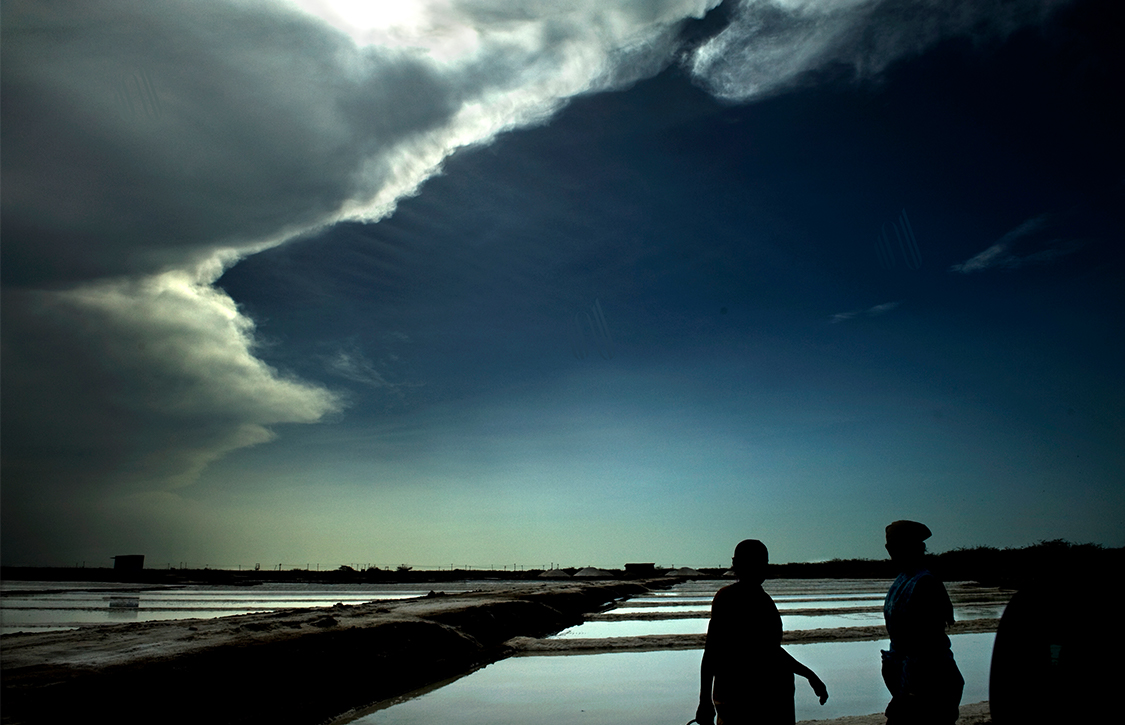

At day’s end



